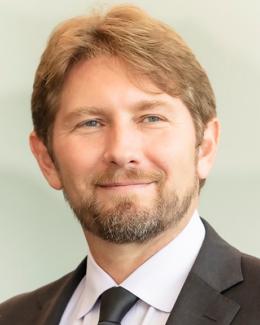The summer school brought students and scientists of all career stages together to share research results and secrets to success in the field of quantum information science. Credit: Yuheng Chen/Purdue University
For the third year in a row, the Quantum Science Center held its signature workforce development event: a comprehensive summer school for students and early-career scientists designed to facilitate conversations and hands-on activities related to multiple areas of quantum research.
The hybrid event featured a packed program at core QSC partner Purdue University, which hosted 140 in-person participants, more than 100 of which were students and postdocs. Hundreds of others attended online via the Purdue Quantum Science and Engineering Institute’s Quantum Coffeehouse YouTube channel, either live or after the school concluded.
QSC Workforce Development Lead and Purdue Professor Alexandra Boltasseva, Purdue Associate Dean for Research and Partnerships Garth Simpson, and QSC Director Travis Humble welcomed speakers and attendees to the school and shared their hopes for the future of quantum and the QSC, a Department of Energy National Quantum Information Science Research Center headquartered at DOE’s Oak Ridge National Laboratory.
“The purpose of the summer school is to highlight QSC research related to the latest developments not only in quantum science and engineering but in machine learning as well,” Boltasseva said. “As we know, these are two ongoing revolutions that are shaping our society.”
Simpson expressed excitement about the next generation of computational architectures and the experts who will use those systems to make new discoveries in fundamental and applied quantum physics. Expanding on this idea, Humble posited that up-and-coming quantum professionals will disseminate information and reimagine research methods to advance national and international R&D priorities.
“If we continue on our current trajectory, quantum will be pervasive in our society 10 or 20 years from now,” Humble said. “Compare this to the rapid adoption of the internet or mobile phones or the development of electricity 100 years ago. These technologies had a huge impact on human behavior, and we’re seeing the same thing happening now with quantum.”
Humble pointed to QSC success stories, such as confirming the existence of entanglement in a quantum magnet, that align with the center’s goals of demonstrating controlled interactions between quantum states, creating new predictive simulators from existing algorithms and developing new instruments for characterizing materials. Incorporating these ideas into the broader quantum ecosystem, he said, will require technology transfer agreements and training opportunities such as the summer school, the NQISRC career fair, workshops, and internship and postdoc programs.
Other lectures, panel discussions, tours and hands-on training sessions also revolved around the event’s daily themes: condensed matter and quantum physics/optics, quantum computing, quantum materials and sensors, and quantum algorithms. Topics included new developments in hardware and software, applications of artificial intelligence and machine learning, and the current state of the quantum workforce.
Amid stiff competition for the title of poster session winner, three presenters emerged victorious: Suparna Seshadri of Purdue for “Biphoton temporal correlation measurement: Using modulation bandwidth to overcome detector resolution,” Mudassir Moosa of Purdue for “Linear-depth quantum circuits for loading Fourier approximations of arbitrary functions,” and Danilo Shchepanovich of Harvard University for “Single atoms in optical tweezers coupled to microcavities.”
To wrap up the event, Boltasseva and PQSEI Managing Director David Stewart thanked speakers, participants and organizers, which included industry sponsors, multiple Purdue departments and colleges, and members of the QSC’s Postdoctoral and Graduate Student Association.
“We have to cross disciplines to solve grand challenges, so I hope you’ve met people who will be new friends and collaborators throughout your careers, and I hope you’ve learned something new that has challenged you to step outside your comfort zone,” Stewart said. “You are going to be the ones who take the foundational research that’s happening today and transition that into the technologies that are going to change the world tomorrow.”
The participating institutions were ORNL, Purdue, Harvard, Fermilab, JILA (a joint institute of University of Colorado Boulder and the National Institute of Standards and Technology), Los Alamos National Laboratory, NIST, CU Boulder, Duke University, Illinois Institute of Technology, University of Technology Sydney, Classiq, IBM, Infleqtion, IonQ, JPMorgan Chase, Microsoft and QuEra.
The QSC, a DOE National Quantum Information Science Research Center led by ORNL, performs cutting-edge research at national laboratories, universities and industry partners to overcome key roadblocks in quantum state resilience, controllability and ultimately the scalability of quantum technologies. QSC researchers are designing materials that enable topological quantum computing; implementing new quantum sensors to characterize topological states and detect dark matter; and designing quantum algorithms and simulations to provide a greater understanding of quantum materials, chemistry and quantum field theories. These innovations enable the QSC to accelerate information processing, explore the previously unmeasurable and better predict quantum performance across technologies. For more information, visit qscience.org.
UT-Battelle manages ORNL for DOE’s Office of Science, the single largest supporter of basic research in the physical sciences in the United States. The Office of Science is working to address some of the most pressing challenges of our time. For more information, please visit https://energy.gov/science. — Elizabeth Rosenthal


